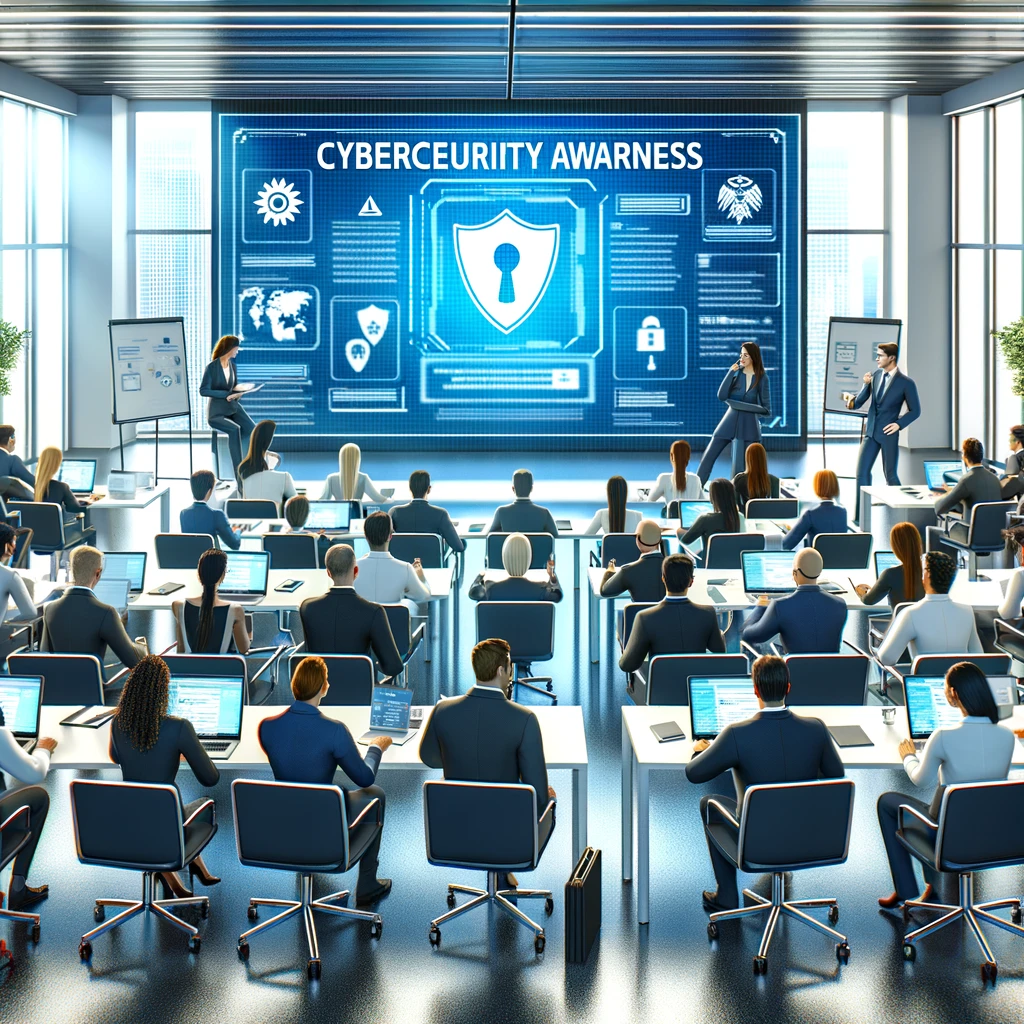Book Progress
Part I: Philosophy & History
Part II: Psychology & Sociology
Part III: Technology & Society
Part IV: AI & The Future
Part V: Cybersecurity & Defense
Part VI: Practical Application

The Human Firewall
Psychology and Behavior in Digital Defense
Guiding Questions
- Why do humans often become the weakest link in cybersecurity systems?
- How do psychological biases affect our ability to assess and respond to digital threats?
- What is the emotional and psychological toll of living in a state of constant digital vigilance?
- How can we develop sustainable approaches to digital security that work with rather than against human psychology?
The Human Element in an Age of Digital Threats
No matter how sophisticated our technical security measures become, humans remain both the ultimate target and the critical vulnerability in cybersecurity systems. Every advanced firewall, every encrypted communication channel, every multi-factor authentication system ultimately depends on human users making appropriate decisions in the face of uncertainty, deception, and pressure.
Yet traditional approaches to cybersecurity often treat humans as flawed components to be controlled rather than conscious agents to be empowered. We blame users for falling victim to phishing attacks while designing systems that make such attacks nearly indistinguishable from legitimate communications. We demand perfect security behavior from people while providing little education about the nature of digital threats or the reasoning behind security measures.
The concept of the 'human firewall' recognizes that people are not just potential security vulnerabilities but also our most adaptive and creative defense against digital threats. Unlike automated systems that can only respond to anticipated attack patterns, humans can recognize novel threats, adapt to changing circumstances, and make contextual judgments that no algorithm can replicate. The challenge is to develop approaches to cybersecurity that leverage human strengths while accounting for human limitations.
The Psychology of Digital Vulnerability and Resilience

1. Social Engineering and the Exploitation of Human Trust
Social engineering attacks succeed not because their victims are naive or careless, but because they exploit fundamental aspects of human psychology that make social cooperation possible. Trust, reciprocity, authority, and social proof are essential for human societies to function, yet each of these positive social traits can be weaponized by malicious actors in digital contexts.
The most effective social engineering attacks create artificial social contexts that trigger these evolved psychological responses. A phishing email that appears to come from a trusted colleague activates our inclination to be helpful and cooperative. A fake technical support call that creates a sense of urgency exploits our deference to apparent authority and expertise. These attacks succeed because they hijack the very social instincts that make us human.
Understanding social engineering as a form of psychological manipulation rather than simple deception reveals why traditional security training often fails. Warning people to 'be suspicious' conflicts with fundamental human needs for trust and connection. Instead, we must develop approaches that help people maintain their essential humanity while developing skills for recognizing and responding to manipulation in digital contexts.
2. Cognitive Biases in Risk Assessment and Decision-Making
Human judgment about digital risks is systematically distorted by cognitive biases that evolved for different environments and threat patterns. The availability heuristic leads us to overestimate dramatic but rare risks like identity theft while underestimating mundane but common risks like data harvesting. Optimism bias makes us believe that security breaches happen to other people, while confirmation bias leads us to ignore information that challenges our existing security beliefs.
The probabilistic nature of cybersecurity conflicts with how humans naturally think about risk and causation. We struggle to understand threats that might materialize months or years after our actions, that affect us through complex chains of causation, or that manifest as statistical risks rather than direct personal harm. These cognitive limitations make it difficult for people to take appropriate precautions against digital threats.
Rather than fighting against these cognitive biases, effective cybersecurity must work with them. This means designing security systems that make secure choices the default and intuitive option, providing feedback that helps people understand the consequences of their security decisions, and creating social contexts that reinforce rather than undermine security-conscious behavior.
3. The Emotional Toll of Digital Vigilance
Living in a state of constant awareness of digital threats exacts a significant psychological toll that is rarely acknowledged in cybersecurity discussions. The cognitive load of continuously evaluating the legitimacy of emails, websites, and digital communications can lead to decision fatigue, anxiety, and ultimately to security behaviors that are either overly restrictive or carelessly permissive.
The hypervigilance required for effective cybersecurity can fundamentally alter how people experience digital technology, turning tools that should enable creativity and connection into sources of stress and suspicion. When every digital interaction must be evaluated as a potential threat, the spontaneity and trust that make digital communication valuable are undermined.
This emotional dimension of cybersecurity reveals why purely technical approaches often fail. People cannot maintain high levels of security awareness indefinitely without psychological costs. Sustainable cybersecurity must account for human emotional needs and limitations, finding ways to provide effective protection without requiring constant vigilance or destroying the positive aspects of digital experience.
4. Digital Hygiene as Personal and Collective Practice
Just as public health approaches to physical hygiene focus on practices that protect both individuals and communities, effective cybersecurity requires developing concepts of digital hygiene that balance personal protection with collective responsibility. Individual security practices—like using strong passwords, keeping software updated, and being cautious about suspicious links—have effects that extend far beyond the individual.
A compromised personal device can become a launching point for attacks against friends, family, and colleagues. Poor security practices by individuals can compromise the security of entire organizations and communities. This interconnectedness means that digital hygiene, like physical hygiene, is both a personal responsibility and a social obligation.
Developing sustainable digital hygiene practices requires moving beyond fear-based security messaging toward approaches that help people understand how their security choices affect others and how collective security practices benefit everyone. This includes creating social norms that support security-conscious behavior, providing resources that make good security practices accessible to everyone, and recognizing that individual security failures often reflect systemic failures to provide adequate support and education.
Case Studies in Transformation
Empowering Human Agency in Digital Defense
The future of cybersecurity lies not in eliminating human involvement but in designing systems that empower human agency and leverage human capabilities. People will always be central to cybersecurity because humans are the ultimate targets and beneficiaries of digital systems. Our goal should be to create cybersecurity approaches that enhance rather than diminish human capabilities and well-being.
This requires fundamental shifts in how we think about the human role in cybersecurity. Instead of treating people as security problems to be solved, we must recognize them as our most adaptable and creative security resource. Instead of designing systems that require perfect human performance, we must create systems that work effectively with normal human capabilities and limitations.
Most importantly, we must ensure that our cybersecurity practices support rather than undermine the human values and relationships that give digital technology its meaning and purpose. Security that protects our digital lives while destroying our capacity for trust, creativity, and authentic connection is ultimately self-defeating. The challenge and opportunity of human-centered cybersecurity is to create protection that enables rather than constrains human flourishing in digital space.
Reader Reflection Questions
- 1. How do you balance security consciousness with trust and openness in your digital relationships?
- 2. What security practices feel sustainable and manageable in your daily life, and which feel burdensome or overwhelming?
- 3. How has awareness of cybersecurity threats changed your experience of using digital technology?
- 4. What role do you think emotions like fear, anxiety, and trust should play in making cybersecurity decisions?
- 5. How can you contribute to creating more security-aware communities without fostering paranoia or isolation?
Continue Your Journey
Explore cyber diplomacy and geopolitics or examine psychological foundations of security.